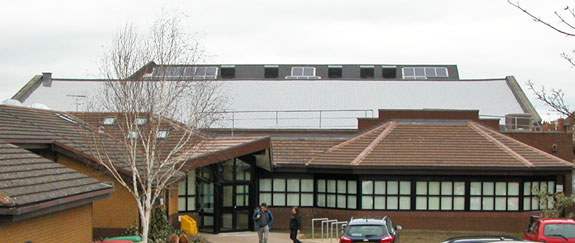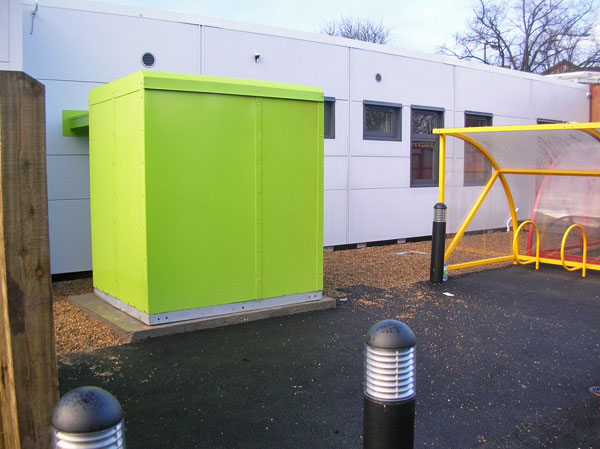Energy Storage
by Edward Thompson
A lot of people have come to Ecobuild looking for "the latest thing" in Renewable Energy. They may not know quite what the latest thing is. Having arrived at this seminar, you are about to find out that the latest thing in renewable energy is Energy Storage.
Many people have come to realise that Energy Storage is critical for Renewable Energy to be Economic.
- Wind turbines generate electricity when the wind blows – which may be in the middle of the night when few people need electricity.
- PV panels generate electricity on bright days – but you only need lighting at night.
Wouldn't it be good if you could store electricity from the time of supply to the time of need?
How can you balance supply and demand?
What can be done to "time shift" demand and supply so that they match up?
The answer is: Energy Storage.
However, electricity storage is very difficult to achieve.
It's the same with Heat Storage: There's plenty of heat on summer days – but you really need heat on winter evenings.
Who can store that heat from summer to winter?
ICAX can – using Seasonal Thermal Energy Storage – and ThermalBanks.
- GSHPs are a critical component.
- GSHPs are good at extracting heat from cold ground, and concentrating the heat to heat buildings.
- GSHPs are even better at extracting heat from warm ground, and concentrating the heat to heat buildings.
- It is easier (and cheaper) to extract heat from warm ground – so that is what ICAX does.
Let me give you examples of solar recharge of the ground in preparation for winter need:
Suffolk One Sixth Form College, Ipswich
ICAX captures heat from the bus turning area in summer and transfers heat to the ground – by means of circulating fluid through pipes embedded in the surface and transferring the heat to ThermalBanks in the ground. This warms up a large volume of ground over the summer months – from its natural temperature of 10°C up to 30°C.
Solar Thermal Collector for Interseasonal Heat Transfer
collects heat in the summer to charge ThermalBanks
to provide space heating in winter
without burning fossil fuels
In winter ICAX uses GSHPs to recycle the heat back into the building – regularly achieving a CoP of 7 to 8. Much higher than the CoP achieved when extracting heat from cold ground.
Wellington Civic Centre, Shropshire
Wellington Civic Centre has a swimming pool, gym, library, coffee shop and Council offices – it even has a Registry Office where you can get married if you can smooth talk someone into to sharing your life with you.
The building shares its heat – depending on the different bodily functions practiced in the building.
The pitched roof has transparent tiles and fluid is passed through the black matting beneath the tiles. This acts as a solar heat collector. The heat is used to heat the swimming pool and for space heating. Surplus heat is stored in the ThermalBank beneath the building.
When there is no heat available from the roof on cold cloudy days the ICAX system extracts heat from the ThermalBank to recycle it back to the building – without burning fossil fuels. When there is little heat from the roof – or even the ground at the end of winter – the ICAX Skid can extract heat from the spring air using Air Source Heat Pumps.
The control system is tuned to extract heat from the warmest place available and to transfer the heat to where it is needed. If heat is not needed, it is transferred back to the ThermalBank for recycling when it will next be needed.
Integral Flat Plate Solar Collector also acts as the roof covering
The system works very well and is conceptually quite simple – so straightforward that some people seem unable to understand it.
The key to successful GSHP installations is good design
However, don't imagine that you will achieve a good performance if you buy a heat pump from one source, ground heat exchange piping from another and get a plumber and an electrician to link them up. The key ingredient of a successful installation is good design and this requires an understanding of the thermal properties of the local geology and the thermal needs of the building. If the component parts are not well matched, well balanced, well installed and well controlled – you risk spending money for no significant reward.
- Is your installer a member of the GSHPA?
- Is he following GSHPA Standards?
Remember, a GSHP installation is not a commodity item. If you go for the cheapest quote – it could cost you dear.
You would also be wise to employ the installer for maintenance after occupation to ensure you achieve a "soft landing". A well designed gshp heating installation can be fine tuned to match how you actually use the building. A good ground source system can transfer heat from one part of the building to another. You cannot ask a biomass boiler to react in this way if you change the use of some of the rooms in a building.
The Merton Intergenerational Centre
The Merton Intergenerational Centre is another interesting case study. ICAX extracts heat from the ThermalBank in the ground in winter. How is the heat restored into the ground in summer?
The building, which has a large glazed south facing side, requires cooling in summer. The normal practice on providing cooling is to blow the heat extracted from the building out of roof mounted chillers into the atmosphere – in other words to waste it. That is simply spending money to throw energy away.
Interseasonal Heat Transfer (IHT) is controlled by an ICAX Skid
The ICAX approach is different – we capture the heat from cooling and use it to heat up the ThermalBank in the ground – ready to recycle the heat for the following winter: Seasonal Thermal Energy Storage.
ICAX can also provide much cheaper cooling than an air conditioning chiller can provide – because heat exchanging with cold ground is much more efficient than heat exchanging with hot air.
Instead of fighting to loose heat into hot air, ICAX works with Nature to provide Renewable Cooling – in a radically more efficient way.
This saves money and saves carbon. We believe that DECC will support Renewable Cooling when it gets round to seeing the advantages in carbon saving.
Meanwhile, ICAX is designing and delivering Interseasonal Heat Transfer systems now.
Interseasonal Heat Transfer is the most efficient form of integrated renewable energy system to protect you against future price rises for fossil fuels (which may be vulnerable to the volatile whims of Vladimir Putin).
Interseasonal Heat Transfer integrates:
- Solar thermal collection
- Underground Thermal Energy Storage
- Heat delivery using GSHPs, and
- Renewable Cooling
Those of you who have correctly connected the rise in the levels of CO2 in the atmosphere to levels over 400 parts per million with the rising water in the Somerset Levels – you now have the option to choose a heating system that is very low in carbon emissions, because it is based on heat recycling.




